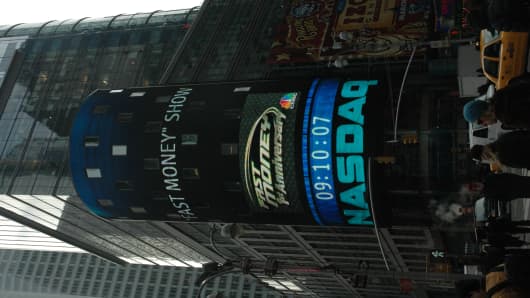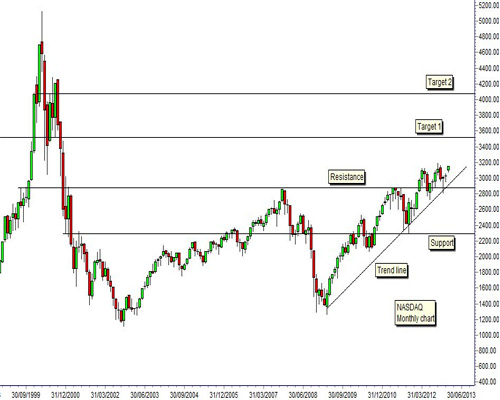The NASDAQ index is not a replica of the S&P 500 Index. It's correct that the NASDAQ is moving into new six-year highs but it has been doing this for many months. The breakout above 2,900 in February 2012 was the first move to make new six-year highs. The general NASDAQ uptrend continued for most of 2012.
There is a very important difference between the NASDAQ uptrend and the S&P uptrend. The S&P is moving towards 1,550. This is a high point reached in 2000 and again in 2007. It has been a powerful resistance level and it could be a powerful resistance level in 2013.
When the NASDAQ moved above 2,900 in 2012 it broke above the strongest resistance level on the NASDAQ index. To understand why, we need to look at some history. In October 1999 the NASDAQ paused briefly near the 2,900 level and then it moved rapidly upwards. In four months it moved from 2,990 to the peak high of 5,132.
This was a massive 71 percent rise later called the internet or tech bubble. From the high of 5,132 the NASDAQ collapsed to below 2,990 in eight months. It took another two years to reach the turning point low of 1,329 in October 2002 at the bottom of the downtrend.




